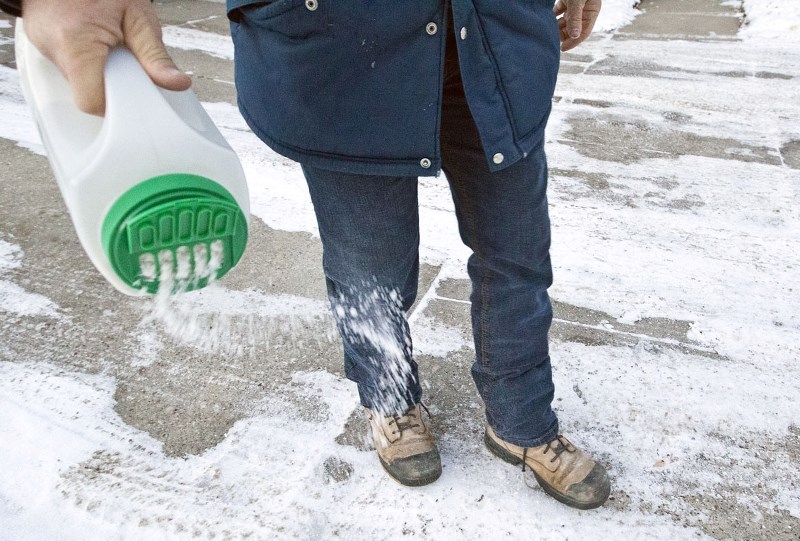I'm a big fan of the white stuff in winter. It's bright, sparkly, fluffy and crunchy, and acts like a big chilly carpet for your feet.
But every fall and every spring I usually have just a few days to enjoy the snow before its nemesis shows up: salt. Dropped by the dumpster on every street and sidewalk, it transforms the snow and ice to slush and makes my boots saltier than a Dead Sea pirate.
Salt doesn't technically melt ice and snow. What it actually does is lower its melting/freezing point to below 0 C so that it has to lose more heat energy before it solidifies.
When water freezes, its molecules slow down enough for intermolecular forces to pull them together into a solid, crystalline structure, says Miles Dyck, professor of soil science at the University of Alberta.
But water is also highly polar, with a strong negative charge to its oxygen end and a strong positive charge to its hydrogen one. These molecules are more strongly drawn to charged ions than each other. Add salt to water, and the polar molecules separate the salt into positive and negative ions and form clouds of molecules around them, preventing the formation of that crystal structure and keeping the water liquid at sub-zero temperatures.
You get this same effect with any substance dissolved in water, Dyck notes. Antifreeze, alcohol, and sugar all work.
Even though salt and ice are typically solid at winter temperatures, their molecules still interact with each other, Dyck says – it just happens more slowly. Certain salts, such as calcium chloride, actually release heat when they dissolve, which makes for faster melting.
When salt "melts" ice, the water molecules have to suck in heat energy from their surroundings to transform from the lower energy solid state to the higher energy liquid one.
That's how you can make homemade ice cream with salt and ice, notes Paul Kane chemistry teacher Michael Ng. The salt causes the ice to pull energy out of the cream and sugar, freezing it rapidly.
The solution to salt
The concentration of salt in water determines when it will freeze, Ng notes. A 10 per cent solution will freeze at about -6 C, while 20 per cent will freeze at about -15 C.
The freezing point of fresh water drops by about 0.28 C for every five parts per thousand of salt in it, notes the U.S. National Snow and Ice Centre.
When it does freeze, the water usually pushes the salt out of its crystal structure, creating concentrated brine and, if you freeze it really slowly, salt crystals, Dyck says.
This brine sometimes gets trapped in the ice, but eventually flows out through gravity, notes the U.S. National Snow and Ice Centre. With icebergs, this creates a layer of super-concentrated brine beneath the ice that, being heavier than the rest of the water, sinks, contributing to global ocean currents.
St. Albert uses roughly 1,500 tonnes of salt a year in its operations in the form of sodium chloride (spread directly on streets) and calcium chloride (mixed in with its sand piles), says city operations supervisor Derek Dallorto.
Salt can concentrate in soils along roads and make them too salty for plants to grow, Dyck says.
"The salt attracts the water so much that the plants can't take it up."
Concentrated salt can also disrupt soil structure, causing it to crust up, he adds. Salts derived from sulfates create acidic conditions that dissolve the carbonate in concrete and allow more water to penetrate into it, where it later freezes to crack sidewalks.
Road salt is considered a toxic substance by Environment Canada that can harm plants, fish and invertebrates, notes Leah Kongsrude, the city's director of strategic services and environment. That's why it's important to store it carefully and limit its use.
"Salt is not a cure-all," Kongsrude says, and is generally only effective at temperatures above -10 C. Residents should always read the instructions before using road salt and not put it out at temperatures below its effective range.
"In a lot of cases, sand will do just as well," she notes, and you can get it for free at the recycling yard.
Or you can save the snow and use my preferred no-salt solution: the pickaxe.




